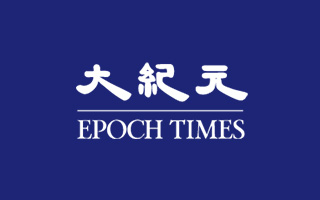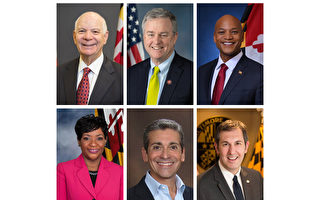【大纪元2月13日讯】棋友哈斯克尔‧斯摩尔(Haskell Small)沉默少言、棋力强劲(三段),每周五晚上在马州贝塞斯达市(Bethesda, MD)主持大华府围棋社(The Greater Washington Go Club),为美国围棋的推广奉献不少心力。该棋社每周聚会弈棋一次,每月并邀请到周源(Yuan Zhou)八段主持围棋讲座一回,周源八段的棋力在大华府地区首屈一指,他教围棋、讲棋技、写棋书,为美国围棋技术水平的提升贡献良多。
间接听到哈斯克尔是位职业音乐家,并曾以围棋为题谱作乐曲。琴、棋自古就在中华文化的四艺之列,将琴与棋合而为一,令我好奇,于是请他针对该围棋乐曲写篇文章以为介绍,该文刊载于第三届大华府地区“中国新年围棋赛”的大会手册内。哈斯克尔有音乐家的高雅气质,也有棋手的气定神闲,该文颇具创意巧思,值得一读,金老师在此译出,以飨读者。
第四届大华府地区“中国新年围棋赛”,将于2010年2月27日〈星期六〉在维州的乔治梅森大学〈George Mason University〉举行,有兴趣参赛者,请联络金老师〈伊媚儿:chin8673@yahoo.com 电话:703-291-4201〉。
《2010年2月10日于北维州 》
************************************
围棋和音乐的思考
哈斯克尔‧斯摩尔
围棋博大精深、令人着迷,每人着迷的原因却不尽相同:有些人因技术上的挑战(严密的战术发挥)而迷恋、还有人被它的艺术美感所吸引,围棋有它的禅学冥想面、也有它的趣味性。围棋的多采多姿、多元特性使每个人都以各自特有的方式而沈醉棋中,但我想着迷者们都同意,围棋不仅是一个游戏、一场比赛,它有一种无形的质感、神秘感,使人为其魔力所诱惑。
由于这些原因,我相信围棋不仅是运动或消遣,而是与音乐艺术同等地位的另一种艺术形式。围棋和音乐都蕴藉神秘、微妙、不可避免的美、与不可隐匿的真。此外,围棋就像音乐,是能够表达人类情感的,棋子叮叮,流露出喜悦、失望、甚至幽默。正是本着这一精神,我发现我生活上的重大兴趣交互重叠、相映成趣。
作为一位对围棋患有重瘾的职业音乐家(钢琴家、作曲家、教师),有一段时间,我想找到一种能结合这两项兴趣的方法。1987年,我成功地以某一棋谱谱写了一曲音乐。我选了大田雄三(Ota Yuzo)和本因坊秀策(Honinbo Shusaku)在1853年Sanjubango比赛〔译注一〕的第六局,并以两架钢琴合奏,分别代表黑子与白子,我选此局,是因为它代表着领土(实地)与模样(势力)的对抗竞争、势均力敌,一个持续的竞相捕捉、吃子追杀,以及不少令人惊心动魄的劫争。
为了制作这首棋曲,我不得不坐在四张不同的椅子。先由棋盘上开始,打谱打至布局阶段,深思其含义;然后移到单人沙发,试图想像布局阶段的音乐表现。此时的我,看上去像在打盹儿,我认为这是最困难的一步——由已知的材料,绞尽脑汁地去设计创造恰当的乐曲。然后我到钢琴旁确认并勾划构想,并即兴写下可能的进展。再回到棋盘,试图感受辨别棋局的方向,及音乐将如何继续进行以传达棋赛的演进。随后回到单人沙发或钢琴等等,以此过程,我终于完成了一个草稿,然后再回到下一张椅子,在写字台上写手稿(当然,目前是用电脑)。在这最后阶段,我常常想撤回到其他椅子再作最后的修改。不可思议的是,经过数个月的费心尽力,我的孩子出生了。
这部棋曲自然的分成三节:布局(宁静、宽敞、很多思考的时间)、中盘(由第一次短兵相接开始,节奏更快、更激烈)、最后是相对平静的官子。比赛中几次爆发的劫争,使我有机会组个周期性的劫争主题,显现出棋手(钢琴)之间劫材的交换。合唱的想法是棋曲的另一个特点(最终表现出一种赋格形式〔译注二〕),以喻指比赛亦步亦趋竞击追捕中的余味(Aji〔译注三〕)、及其意味深长的纤巧微妙。作品的高潮(我相信这也是比赛的高潮)是185、186手的消劫。至此,比赛的攻杀已定,此时,相互争胜的俩棋手可能也都算出了最终结果——和棋(即空地相同)。
1987年夏天在麻州阿默斯特(Amherst, MA)第三届美国围棋大会上,举行了这部棋曲“棋弈”(A Game of Go)的首映,一位同事和我弹钢琴部分,而围棋三段、本人也是一位钢琴家的马文‧沃尔夫陶(Marvin Wolfthal)执行投影部分,他依乐谱适时地按下电脑上的输入键以重现棋谱行棋的顺序。首映之后,它也演出多次(有时有投影部分、有时没有),包括在卡内基音乐厅和肯尼迪中心的表演,还于次年3月6日在国家公立广播电台(NPR, National Public Radio)的节目“凡事考虑”(All Things Considered)中播出过。也已发行两张CD录音,其中之一是由钢琴双人队Quattro Mani录制的,标题为“棋弈”(“A Game of Go”,Klavier 11106)。再过数周,我将把它放在“你吐吧”(YouTube)上www.youtube.com/haskellsmall
〔译注一〕:Sanjubango棋赛是两位棋手间下30场(30番棋)棋的竞赛,历史上仅出现一次,就是1853年大田雄三和本因坊秀策所下。
〔译注二〕:Fugue是法语,赋格,是一种多声部的乐曲,其主要结构是先在一个声部上出现一个主题片断,然后在其他的声部上模仿这个片断,这时主题声部的演奏与新的声部相对应的乐句,形成声部间相互问答追逐的效果。
〔译注三〕:Aji是日语,余味、味道。
REFLECTIONS ON GO AND MUSIC
Haskell Small
We are all attracted to go by our own combination of reasons. Some of us find the technical challenge- the rigorous exactitude of tactical play- to be the paramount attraction. Others are drawn to the game by its aesthetic beauty. There is also a Zen-like meditative aspect to the game. And of course, go is great fun. An individual blend of these and other attributes make go a compelling activity for each of us in our own way, but I think we can all agree that go is more than a game, that there is an intangible quality- a mystique- that ensnares us in its magic.
For all these reasons, I believe that go is not just a sport or pastime, but an art of equal status to the art of music. Both go and music are enwrapped with mystery, subtlety, and the beauty of an inevitable, ineluctable truth. Furthermore, like music, I contend that go is capable of the expression of human emotions- go moves can be found that exude joy, despair, even humor. It is in this spirit that I have found the major interests of my life crossing paths.
As a professional musician (pianist, composer, and teacher) who also suffers from an addiction to go, I had for some time wanted to find a way to combine these interests. This came to fruition in 1987 when I conceived of the idea to compose a piece of music based on a game of go. I decided to employ 2 pianos, one representing black, the other white, to set each move or sequence of moves of a classic game, the sixth game of the sanjubango between Ota Yuzo and Honinbo Shusaku played in 1853. I chose this game for its balance of expanding moyos versus territory, an ongoing protracted race to capture, as well as several exciting ko battles.
To write this piece I had to sit in four different chairs. I started at the go board, playing through the opening moves of the game, cerebrating on their meaning, then moved to an armchair where I attempted to imagine a musical rendering of these moves. Although if observed I would seem to be napping, I consider this the hardest step- mentally grappling with the given materials to create from whole cloth a gratifying musical design. Then I would go to the piano to confirm and sketch out the ideas, and improvise possible continuations. Then back to the go board to try to discern a feeling or direction for how the music would continue to best serve the flow of the game. Then back to the armchair or piano, etc. With this process I eventually completed a rough draft, then to the next chair- at a writing table to produce the manuscript (or these days on computer of course). During this last stage, often I would retreat to one of the other chairs again for final revisions. Miraculously, after a number of months of hard labor, my baby was born.
The piece naturally partitioned itself into three sections analogous with the opening of the game (placid, spacious, much thinking time), middle game (signaled by the first contact play- faster paced, intense), and finally the relatively calm unwinding of the endgame. The several ko fights that erupted during the game afforded me the opportunity to help unite the work with a recurring ko theme, which punctuated the exchanges of ko threats between the players/pianos. Another feature of the music is a choral idea (that eventually culminates in a fugue), used to suggest the rich subtleties of the aji remaining in the evolving race to capture. The climax of the piece (and I believe of the game) is the resolution of the ko at moves 185 and 186. The race to capture is now resolved, and both players probably knew at this point that their mutual struggle for victory produced the ultimate result- jigo.
“A Game of Go” was premiered at the third U.S. Go Congress in Amherst, MA, in the summer of 1987. A colleague and I played the piano parts while Marvin Wolfthal, 3-dan and also a pianist, performed the video part by pressing return on a computer in time to each move as indicated in my score. It has since enjoyed a number of performances, both with and without the video component, including performances at Carnegie Hall and the Kennedy Center, and was also featured on NPR’s “All Things Considered” on Mar. 6, 1988. Two recordings have been released, one by the 2-piano team Quattro Mani, who titled their CD “A Game of Go” (Klavier 11106). In the next few weeks I will be releasing the video on YouTube http://www.youtube.com/haskellsmall.
(http://www.dajiyuan.com)





